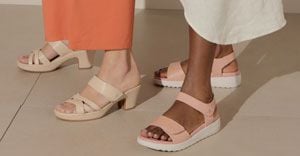
Subscribe & Follow
Clothing sector still in doldrums
Lower interest rates are not pushing spending, as consumers are using any spare cash to pay off debt, and the descent into winter in the first half of the year will hold people back, said McArthur, even as his Durban-based retailer posted a rise in pretax profit for the six months to October of 14%.
“The second half of 2010 will see some sort of recovery, but the first half of next year is going to be tough,” he said.
The Reserve Bank's five percentage-point cut in interest rates since December has done little to ease the cash position of SA's consumers, affected more by job losses than lending rates. Household consumption fell in the three months ending June for a fourth straight quarter.
Indications for the coming Christmas season were not good, McArthur said. “We've seen erratic trade, which we don't like. We do well in the first two weeks (of the month) when cash is around, we do well in the fourth week. In the third week it dries up. We've seen that problem in the last recession.”
He said the group, whose core market is people aged 16 to 24 and for which cash transactions account for 83% of purchases, was also “quite anxious” about the later start to the school holidays — pushed back to mid-December from the end of November — due to changed term timetables for next year's Soccer World Cup.
Even if growth in gross domestic product did become positive, it would take a while to filter through to the retail economy.
While people were more willing to spend on fashion in warmer, sunnier weather, they were less willing to fork out money when the days became colder and darker, McArthur said.
“From the six months from the first of April, that's still going to be difficult. We're going to be in a similar period. Somehow consumers in fashion get excited when the sun comes out.”
For the six months to September, however, the company saw pretax profit rise to R375m from R330m. Headline earnings per share rose 15% to 101,5c from 88,2c as sales grew 15.1% in the apparel business, which accounts for 71% of group sales. Sales fell 5.9% at the company's Miladys unit, which targets women aged 29 to 49, after a “slightly off” seasonal range, McArthur said.
Chris Gilmour, a retail analyst at Absa Investments, said Miladys was an “incongruous inclusion. They should have got rid of it a long time ago.”
Homeware sales were more subdued than clothing. Unit sales at Mr Price Home fell 4%, even as the value of sales increased.
Source: Business Day
Published courtesy of














